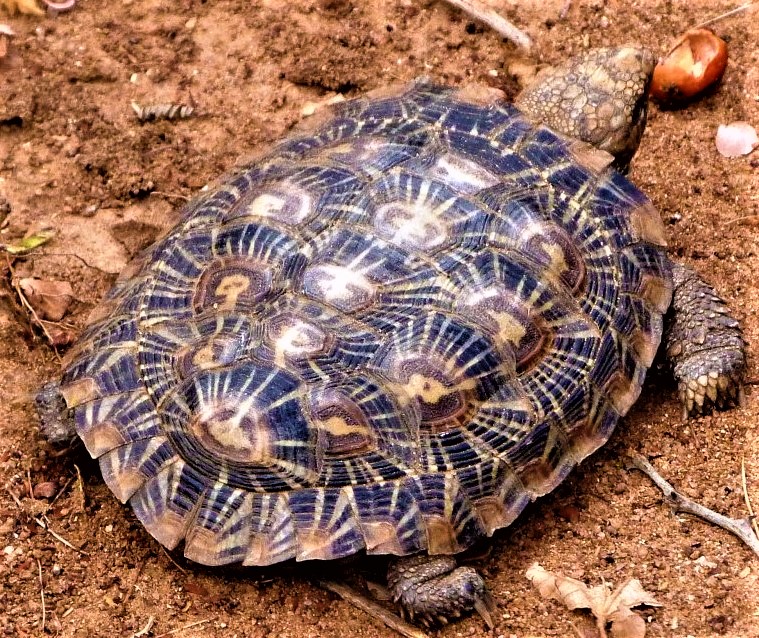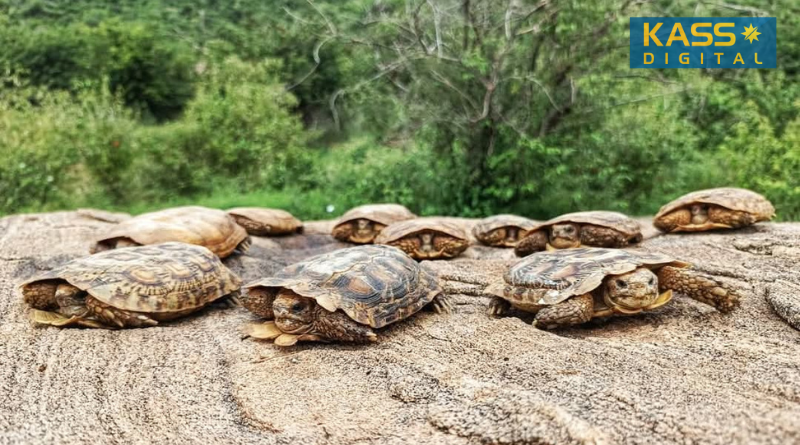Kenya Launches 10-Year Conservation Plan to Save Critically Endangered Pancake Tortoise
By Chemtai Kirui – CHIAKARIGA, Tharaka-Nithi, May 16
Kenya on Friday unveiled a decade-long national recovery plan to protect the Pancake Tortoise (Malacochersus tornieri), a critically endangered species found almost exclusively in the country’s arid, rocky landscapes.
The launch, held in Chiakariga, Tharaka-Nithi County, coincided with World Endangered Species Day—marked annually on the third Friday of May to raise awareness about the urgent need to protect threatened species and their habitats.
This is Kenya’s first coordinated national effort to halt the decline of the rare flat-shelled reptile, known locally as kobe kama chapati.
The action plan, running from 2025 to 2035, outlines strategies to protect the remaining populations, most of which live outside protected areas on private or community land across nine counties in central and northern Kenya.
“Kenya holds the largest wild population of the Pancake Tortoise globally. This plan signals our serious commitment to prevent its extinction,” said Dr. Erustus Kanga, Director General of the Kenya Wildlife Service (KWS).
Unique Adaptation, Grave Risk
The pancake tortoise is known for its unusually flat, flexible shell that allows it to squeeze into rock crevices to escape predators. But its unique biology comes at a cost: it lays only one egg per year, making population recovery extremely slow.
The species faces mounting threats, including habitat destruction from agriculture and mining, illegal collection for the pet trade, and climate change.
Listed as critically endangered on the IUCN Red List and under Appendix I of the Convention on International Trade in Endangered Species (CITES), the tortoise is at high risk of extinction without urgent conservation action.
More than 95% of its habitat in Kenya lies outside national parks, placing conservation responsibility directly into the hands of county governments and communities.
“ _Counties Are the Last Strongholds”_
The launch brought together local leaders, conservation experts, and community groups from the nine counties where the species persists—including Kitui, which is home to over half of Kenya’s remaining population.
Each county will adopt localized strategies: habitat restoration in Kitui, eco-tourism development in Laikipia, and community-led monitoring in Samburu. In Marsabit, officials are stepping up border surveillance to curb illegal trade into Ethiopia.
“Our drylands may seem empty to some, but they are vital. What we do here will decide the fate of this species,” said Tharaka-Nithi Governor Muthomi Njuki, urging county assemblies to allocate funds for wildlife conservation
A Global Moment
Kenya’s initiative aligns with international commitments under the Convention on Biological Diversity, the UN Sustainable Development Goals, and the Kunming-Montreal Global Biodiversity Framework.
Conservation NGOs, including Lewa Wildlife Conservancy, the Turtle Survival Alliance, and IUCN’s Tortoise and Freshwater Turtle Specialist Group provided technical support in drafting the plan.
The National Museums of Kenya and community conservancies are expected to lead education and awareness efforts.
“We’re not just launching a document,” said Peter Nyawira of Lewa Wildlife Conservancy. “We’re building a coalition—counties, communities, scientists, and policymakers—for one small tortoise that tells a bigger story about our disappearing drylands.”

Public Involvement
The plan encourages citizens to report sightings, reject illegal pet purchases, and support local rangers. KWS has opened a toll-free line to collect data and combat trafficking.
With its crepe-like shell and the odds stacked against it, the Pancake Tortoise has become a symbol of Kenya’s broader biodiversity challenge.
“This species is a quiet survivor of time. But it won’t survive us if we do nothing,” said Dr. Kanga. “This plan is our response to that silence.”




